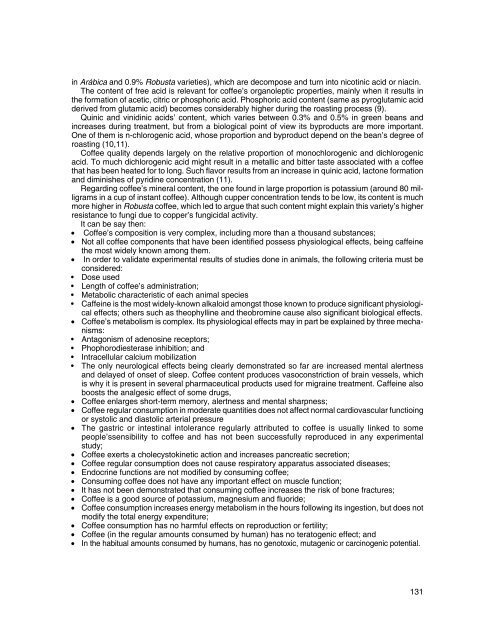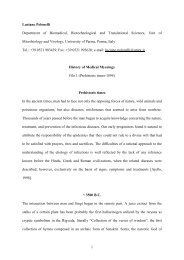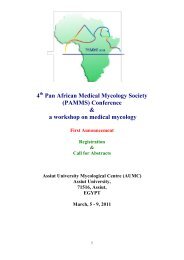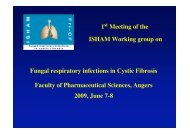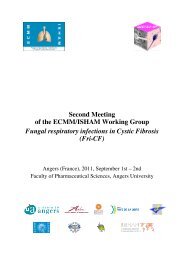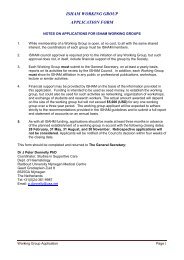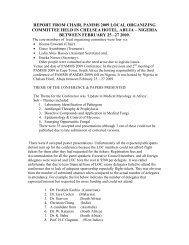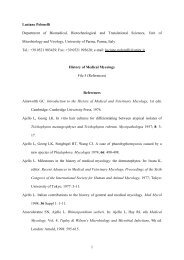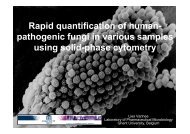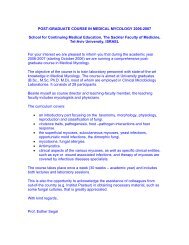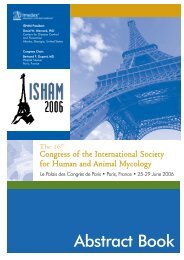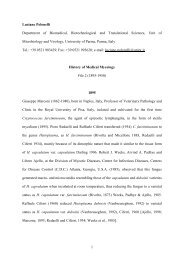Analysing coffee’s chemical composition andeffects upon human healthManuel Elkin PatarroyoCoffee is one of the most widely know beverages, drunk by people all around the world and know foracting as a stimulant of people’s psycogenic activity. Coffee is one of the most important agriculturalproducts for the social and economical growth of producing countries. Due to this psycogenic activityand its economical, political and social relevance, coffee has been the subject of extensive analysis(chemical and biological concerning its psycogenic activity) aimed at understanding the mechanismsunderlying such effect, its action or relation to the nervous system, as well as the positive or harmfuleffects that its consumption might have on human health. It has become need thus, to gain a deeperknowledge of its chemical components in order to understand its biological activity.Coffee, same as any other biological product, has a huge biological and chemical complexity, withmore than 100 substances and chemical components being identified to date, some of which havebeen clearly identified and their biological function has been defined.When studying the chemical characteristics of human beings, several factors must be taken intoaccount, including their genetical origin, degree of biological development, environmental framework,type of analysis being applied and such method’s ability to reach valid conclusions etc. Such samerestrictions applied to coffee.Regarding coffee thereby, variables such as the variety’s degree of maturity (Robusta, Arábica,etc.), the way they are prepared, analysis methods being employed and their intrinsic limitation, etc.;may account for different between interpretations (another variable) and may even contract be contradictoryin some occasions.Soluble coffee contains a larger amount (expressed as a percentage of dried weight) of minerals(2 to 3 times) and caffeine (4 or 5 times), compared to other substances susceptible to degradation(processed products) where such components disappear or diminish drastically their concentration,as occurs for instance with trigonelline, aliphatic lipids (10%) and oligosaccharides.Such variation in composition is not only important in terms of the products’ physicochemical characteristics,but also concerning its organoleptic features such aroma, taste, stimulating activity, etc.Differences between the Arábica and Robusta varieties, mainly regarding the of carbohydratescontent of green coffee beans (in relation to the variation in dried weight), and most of all in the contentof sucrose; regarding this later aspect, Arábica content of sucrose is found to be 2 or 3 times largerthan the one in Robusta, which has a key effect on taste related characteristics (2).Roasted coffees have a higher level of lipid content (around 16% in Arábica and 11% in Robusta),associated in two coffee specific diterpenes (cafestol and kahweol), which are the ones releasingtheir most volatile products along the roasting process and whose level might be help determining theproportion of Arábica and Robusta coffee chosen for preparing blended coffees, given that kahweolis present in Robusta but not in Arábica coffee (4).The protein content of both varieties is practically the same, being between 8.8% to 12.2% in greencoffee beans, but the content of free amino acids is highly scarce, ranging between 0.2% to 8%. Bythe same token, around 20% to 40% is lost during the roasting process (depending on its intensity),as result of protein’s denaturation. Some amino acids’ proportion might increase during roasting,whilst some other amino acids, as arginine, cysteine, serine and threonine, might disappear as aconsequence of this process (5,6).Caffeine is the major alkaloid substance contained in coffee. Its concentration (in milligrams/Kg/driedweight) varies; being Arábica’s (9.000-14.000) practically half of Robusta’s concentration (15.000-26.000). All other alkaloids in coffee, such as theobromine and theophylline, are found in much lesserproportions.Nitrogenous bases are divided in two large groups: those remaining stable after raosting as ammoniac,betaine and choline, and some instable, such as trigolline (present in around 0.6% to 1.2%130
in Arábica and 0.9% Robusta varieties), which are decompose and turn into nicotinic acid or niacin.The content of free acid is relevant for coffee’s organoleptic properties, mainly when it results inthe formation of acetic, citric or phosphoric acid. Phosphoric acid content (same as pyroglutamic acidderived from glutamic acid) becomes considerably higher during the roasting process (9).Quinic and vinidinic acids’ content, which varies between 0.3% and 0.5% in green beans andincreases during treatment, but from a biological point of view its byproducts are more important.One of them is n-chlorogenic acid, whose proportion and byproduct depend on the bean’s degree ofroasting (10,11).Coffee quality depends largely on the relative proportion of monochlorogenic and dichlorogenicacid. To much dichlorogenic acid might result in a metallic and bitter taste associated with a coffeethat has been heated for to long. Such flavor results from an increase in quinic acid, lactone formationand diminishes of pyridine concentration (11).Regarding coffee’s mineral content, the one found in large proportion is potassium (around 80 milligramsin a cup of instant coffee). Although cupper concentration tends to be low, its content is muchmore higher in Robusta coffee, which led to argue that such content might explain this variety’s higherresistance to fungi due to copper’s fungicidal activity.It can be say then:• Coffee’s composition is very complex, including more than a thousand substances;• Not all coffee components that have been identified possess physiological effects, being caffeinethe most widely known among them.• In order to validate experimental results of studies done in animals, the following criteria must beconsidered:• Dose used• Length of coffee’s administration;• Metabolic characteristic of each animal species• Caffeine is the most widely-known alkaloid amongst those known to produce significant physiologicaleffects; others such as theophylline and theobromine cause also significant biological effects.• Coffee’s metabolism is complex. Its physiological effects may in part be explained by three mechanisms:• Antagonism of adenosine receptors;• Phophorodiesterase inhibition; and• Intracellular calcium mobilization• The only neurological effects being clearly demonstrated so far are increased mental alertnessand delayed of onset of sleep. Coffee content produces vasoconstriction of brain vessels, whichis why it is present in several pharmaceutical products used for migraine treatment. Caffeine alsoboosts the analgesic effect of some drugs,• Coffee enlarges short-term memory, alertness and mental sharpness;• Coffee regular consumption in moderate quantities does not affect normal cardiovascular functioingor systolic and diastolic arterial pressure• The gastric or intestinal intolerance regularly attributed to coffee is usually linked to somepeople’ssensibility to coffee and has not been successfully reproduced in any experimentalstudy;• Coffee exerts a cholecystokinetic action and increases pancreatic secretion;• Coffee regular consumption does not cause respiratory apparatus associated diseases;• Endocrine functions are not modified by consuming coffee;• Consuming coffee does not have any important effect on muscle function;• It has not been demonstrated that consuming coffee increases the risk of bone fractures;• Coffee is a good source of potassium, magnesium and fluoride;• Coffee consumption increases energy metabolism in the hours following its ingestion, but does notmodify the total energy expenditure;• Coffee consumption has no harmful effects on reproduction or fertility;• Coffee (in the regular amounts consumed by human) has no teratogenic effect; and• In the habitual amounts consumed by humans, has no genotoxic, mutagenic or carcinogenic potential.131


